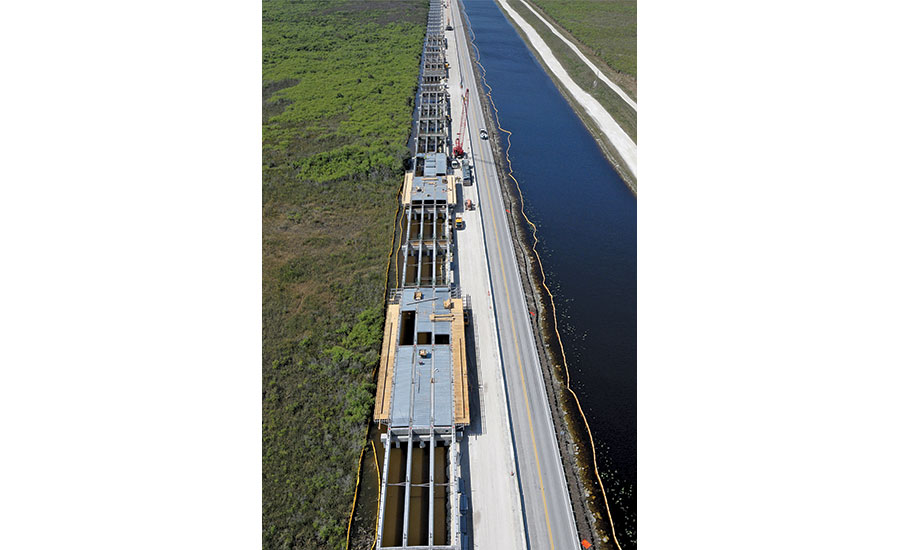Two projects to improve the quality, quantity and distribution of water in the Everglades National Park in Florida—the construction of a reservoir and the raising of a portion of the Tamiami Trail—moved forward in June.
The Everglades National Park announced on June 3 that with the assistance of a federal grant it will lift portions of U.S. Route 41 in the Everglades that have impeded the flow of freshwater from the north into the vast wetland for 91 years. The next day, the South Florida Water Management District moved to begin clearing land for the construction of a 240,000-acre-ft reservoir in the Everglades Agricultural Area (EAA).
Environmental groups are hailing the news because completion of these projects will improve the flow of freshwater to the Everglades and begin to rehydrate the parched ecosystem.
Broad, shallow “sheetflow” of water from periodic overflows of Lake Okeechobee created the Everglades. Until the mid-20th century, a focus on flood control led engineers to drain the marsh land and control the lake’s level by discharging its water through the Caloosahatchee River and the St. Lucie Canal. Since about 1970, better understanding of the hydrology has prompted efforts to restore the ecosystem.
The reservoir helps with restoration by relieving pollution of three water bodies: the Caloosahatchee and St. Lucie estuaries and Florida Bay.
“Instead of throwing that water away, we’ll capture some of it with the reservoir, and we’ll redirect that water south to rehydrate Everglades National Park and Florida Bay,” says Celeste De Palma, director of Everglades Policy for Audubon Florida. The prospect of finally achieving such broad success is enormously exciting to Everglades activists, she says.
The EAA Reservoir will store water before releasing it to a 6,500-acre artificial marsh called a stormwater treatment area (STA) for slow, natural cleansing. The cleansed water will flow south through the National Park to Florida Bay.
The total estimated cost of the reservoir and stormwater treatment area is $1.6 billion, with the stormwater treatment area estimated at $150 million, says Matt Morrison, office chief for the water management district.
The contracts for the reservoir and the storm water area will “most likely” be separately awarded, he says.
The reservoir is in the initial stages of design by the Corps of Engineers, and “the STA is in the design and construction phase for early construction start,” Morrison says. The district is “crashing the schedule” to expedite the construction, he adds.
The reservoir is “scheduled for design over the next two to three years, and something that size would typically take probably four to five years to construct,” Morrison says.
Separately, the $60-million federal grant to the National Park will be combined with $40 million in state funds already authorized to raise and bridge 10.6 miles of the Tamiami Trail at the north end of the National Park. The embankment dammed the natural sheetflow from Lake Okeechobee that created the Everglades ecosystem, causing its gradual decline. The combined funds will allow the raising and bridging of the Tamiami Trail over the Everglades.
Everglades restoration “is all about being able to recreate the north-to-south flow of water,” says De Palma. “The main goal in getting there is reconstructing the bottom part of the Everglades by trying to recreate those flows. You need to remove physical barriers to flow. Tamiami Trail has been a physical barrier to flow since it was finished in 1928, so that is a critical first step.”
Two separate sections of the Tamiami Trail totaling about 3.6 miles were elevated between 2012 and 2019. The $100 million in combined state and federal funds will complete bridging a final 6.7-mile section of the highway between the earlier sections by early 2023, National Park Service officials say.
On June 13, the South Florida Water Management District approved an agreement with Florida Power and Light Co. to relocate power lines on a section of Old Tamiami Trail in Miami-Dade County, district officials said. Once the lines are relocated, the district will move quickly to move and raise the road, Morrison says.


Post a comment to this article
Report Abusive Comment